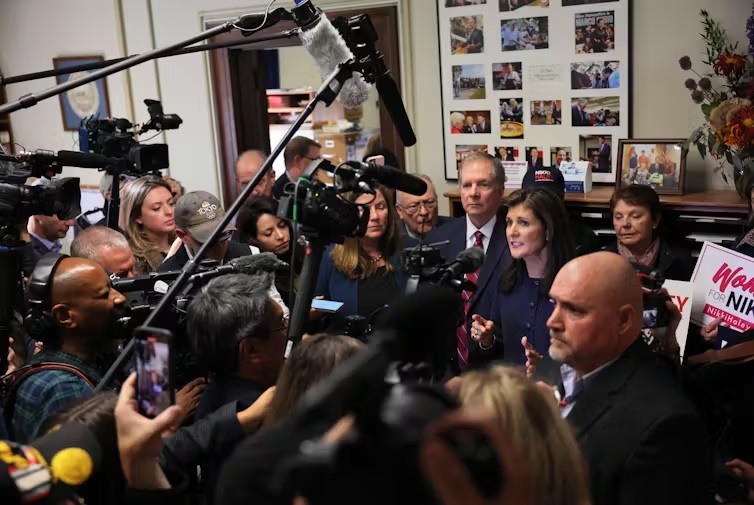by Charles R. Hunt, Boise State University
Iowa and New Hampshire have long been the first states to hold presidential contests in election years.
But should they go first?
As a political scientist who studies Congress and elections, I know that this largely unquestioned influence of the two states raises serious concerns around fairness, diversity and political representation. Here they are:
https://www.instagram.com/reel/C2aw8QFSutz/?utm_source=ig_web_button_share_sheet
They don’t represent the country
White, non-Hispanic residents make up 84% and 89% of Iowa and New Hampshire respectively, compared with just 58% of the nation as a whole. Iowa and New Hampshire are not representative of the U.S., particularly on the basis of race.
This matters because the presidency is a national office that affects everyone. Because of the boost in political momentum, media coverage and donations that a win in Iowa or New Hampshire can provide, their choices have a bigger effect on the race than most other states. Candidates recognize this and campaign accordingly: Nearly 80% of all Republican candidates’ events through mid-January 2024 had taken place in Iowa and New Hampshire.
Staggering the primaries isn’t fair
American elections are carried out by a decentralized system. States and parties choose to hold primary elections at different times throughout an election year leading up to the party conventions.
Even if Iowa and New Hampshire were a perfect demographic mirror of the country, the process would still be unfair to states that don’t vote early. In almost all modern cases, the primaries in both major parties have been all but wrapped up by April, leaving dozens of states that had not yet held primaries essentially without a voice in the process.
In the 2020 Democratic primary, for example, Joe Biden’s main rival – Sen. Bernie Sanders – suspended his campaign before 26 states and territories had even held their contests.
Later states might have a kind of information advantage. For example, some states will likely have the benefit of seeing the outcomes of some of Donald Trump’s many legal cases, while Iowa and New Hampshire voters will not.
But this advantage cuts both ways. Voters in later-voting states often don’t even see the same slate of candidates on their ballot as Iowans do. Now that Gov. Ron DeSantis has suspended his campaign, most of the country’s voters will never have gotten a chance to weigh in on him.
What are the alternatives?
Different, more diverse states could go first on the primary calendar. For example, frontloading bigger states like California, Illinois or Texas would certainly bring a broader swath of voters into the mix; but it also would make person-to-person campaigning more difficult. It’s also politically fraught: Democrats moved South Carolina earlier in their own primaries in 2024, but it was perceived by many as a move to boost incumbent Biden, who lost Iowa and New Hampshire in the 2020 primaries, but won South Carolina.
A more substantial reform could create a single primary election day for all states – how the U.S. does every other election in this country.
Small states would surely dislike this reform: By the current method of staggering elections, these states can shine individually, rather than get lost in the mix of larger states with more voters and delegates. Staggered primaries might also help voters get to know the candidates on a more intimate basis, and political science says voters think of politics in personal terms.
But the current cost – essentially disenfranchising people in later-voting states – might not be worth it.
Charles R. Hunt, Assistant Professor of Political Science, Boise State University
This article is republished from The Conversation under a Creative Commons license. Read the original article.
